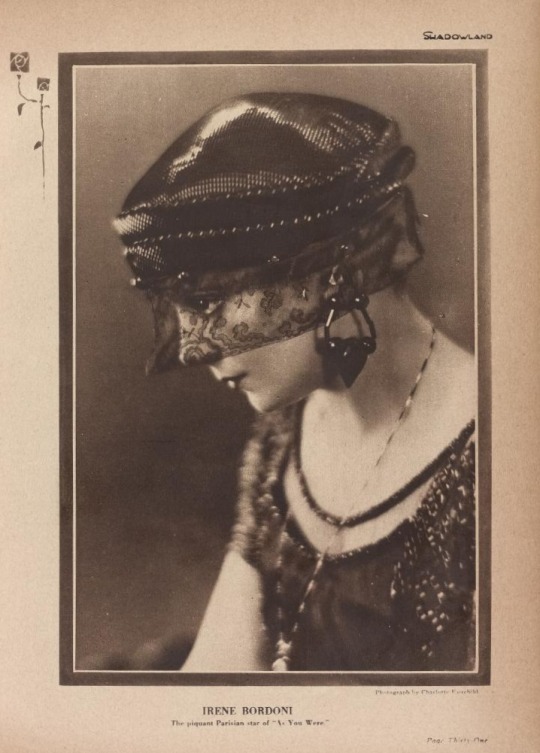#bordoni
Explore tagged Tumblr posts
Text

Mademoiselle I. Bordoni on a vintage postcard
#carte postale#postkarte#historic#postcard#sepia#ansichtskarte#postkaart#tarjeta#bordoni#briefkaart#mademoiselle#ephemera#photography#mademoiselle i. bordoni#vintage#postal#photo
8 notes
·
View notes
Text
Ah, you're new around here ;-)
I think that the Vatican has the most perverse internet download history, as occasionally makes the news.
I know that, contrary to narrative, Luce's staff isn't a Peregrino's "bordone" — no such two-headed bordone exists in the historical record nor iconography. So where did the Cardinals draw inspiration?
The Vatican internet download history explicitly describes BDSM lesbian porn where they rape each other in both holes using dildos on sticks. You can check, for research purposes...
But it still remains the conscious design choice by the Vatican.


#tokidoki#character design#luce 2025#bordone#bordone staff#bordoni#pilgrim's staff#“that’s just the artstyle!!!!”
2K notes
·
View notes
Text

Giuseppe Casetti. Mirella Bordoni, 1975.
344 notes
·
View notes
Text

Irène Bordoni photographed for the musical film Paris (dir. Clarence G. Badger, 1929)
#paris#clarence g. badger#1929#irène bordoni#classic film#musical film#musical#classic hollywood#old hollywood#classic actress#vintage photography#black and white photography#elmer fryer#vintage fashion#fantasia#pearls#jewelry#vintage jewelry#glamour#old glamour
36 notes
·
View notes
Text

Faustina Bordoni possessed remarkable beauty of figure and face, an expression full of fire and intelligence, to which she united tact, amiability, and prudence. As singers the rivals were nearly equal ; for Faustina, while surpassing the Cuzzoni in power of execution, had not the command of expression which made the latter's art so pathetic and touching. Dr. Burney, the musical historian, and father of Madame d'Arblay, describes Cuzzoni in these words : " A native warble enabled her to execute divisions with such facility as to conceal every appearance of difficulty ; and so soft and touching was the natural tone of her voice, that she rendered pathetic whatever she sang, in which she had leisure to unfold its whole volume. The art of conducting, sustaining, increasing, and diminishing her tones by minute degrees, acquired for her among professors the title of complete mistress of her art. In a cantabile air, though the notes she added were few, she never lost a favorable opportunity of enriching the cantilena with all the refinements and embellishments of the time. Her shake was perfect ;she had a creative fancy, and the power of occasionally accelerating and retarding the measure in the most artificial manner by what the Italians call tempo rubato. Her high notes were unrivaled in clearness and sweetness, and her intonations were so just and fixed that it seemed as if it were not in her power to sing out of tune." The celebrated flute-player Quantz, instructor of Frederick II., also gave Dr. Burney the following account of Faustina's artistic qualities : " Faustina had a mezzo-soprano voice, that was less clear than penetrating. Her compass now was only from B flat to G in alt ; but after this time she extended its limits downward. She possessed what the Italians call un cantar granito ; her execution was articulate and brilliant. She had a fluent tongue for pronouncing words rapidly and distinctly, and a flexible throat for divisions, with so beautiful a shake that she put it in motion upon short notice, just when she would. The passages might be smooth, or by leaps, or consisting of iterations of the same note ; their execution was equally easy to her as to any instrument whatever. She was, doubtless, the first who introduced with success a swift repetition of the same note. She sang adagios with great passion and expression, but was not equally successful if such deep sorrow were to be impressed on the hearer as might require dragging, sliding, or notes of syncopation and tempo rubato. She had a very happy memory in arbitrary changes and embellishments, and a clear and quick judgment in giving to words their full value and expression. In her action she was very happy ; and as her performance possessed that flexibility of muscles and face-play which constitute expression, she succeeded equally well in furious, tender, and amorous parts. In short, she was born for singing and acting."
Faustina Bordoni, who from the time of her radiant debut was known as the " New Siren," was the daughter of a noble Venetian family, formerly one of the governing families of the republic. Born in the year 1700, she began to study her art at an early age under Gasparoni, who developed a beautiful and flexible voice to the greatest advantage. She made her first appearance at the age of sixteen in Pollarolo's " Ariodante," and her beauty, which was ravishing, her exquisite voice, dramatic power, and artistic skill, gave her an immediate place as one of the greatest ornaments of the lyric stage. She came into rivalry with Cuzzoni even at this early period, but carried off the palm of victory as she did in after-years. Venice, Naples, Florence, and Vienna were successively the scenes of her triumphant reign as an artist, and she became acknowledged as the most brilliant singer in Europe. At Vienna she was appointed court singer at a salary of fifteen thousand thalers. Here she was found by Handel, who carried her to London, where she made her debut May 5, 1726, in that great composer's " Alessandro," very appropriately singing Stcttira to the Boxana of Cuzzoni. Faustina's amiable and unobtrusive character seems to have made her an unwilling participant in the quarrels into which circumstances forced her, and to have always deserved the eulogium pronounced by Apostolo Zeno on her departure from Vienna : "But whatever good fortune she meets with, she merits it all by her courteous and polite manners, as well as talents, with which she has enchanted and gained the esteem and affection of the whole court." Throughout life a sweet temper and unspotted purity of character made her the idol of her friends as well as of the general public. Faustina seems to have left London gladly, though her short career of two years there was a brilliant artistic success. The scandalous bickerings and feuds through which she passed made her departure more of a pleasure to herself than to the lovers of music in turbulent London.
She returned" to Venice in 1728, where she met Adolph Hasse, who was leader of the orchestra at the theatre in which she was engaged. Faustina, in the full bloom of her loveliness, was more than ever the object of popular adulation ; and many of the wealthy young nobles of Venice laid their names and fortunes at her feet. But the charming singer had found her fate. She and Hasse had fallen in love with each other at first sight, and Faustina was proof against the blandishments of the gilded youth of Italy. Hasse was the most popular dramatic composer of the age, and had so endeared himself to the Italian public that he was known as "il caro Sassone" a title which had also been previously given to Handel. Hasse had commenced life as a tenor singer, but his talent for composition soon lifted him into a higher field of effort. His first opera was produced at Brunswick, but its reception showed that he must yet master more of the heights and depths of musical science before attaining any deserved success.So he proceeded to Italy, and studied under Porpora and Alessandro Scarlatti. In a few years he became a celebrity, and the opera-houses of Italy eagerly vied with each other in procuring new works from his fecund talent. Faustina, then at the zenith of her powers and charms, and Hasse, the most admired composer of the day, were congenial mates, and their marriage was not long delayed.
Of this composer a few passing words of summary may be interesting. His career was one long success, and he wrote more than a hundred operas, besides a host of other compositions. Few composers have had during their lifetime such world-wide celebrity, and of these few none are so completely forgotten now. The facile powers of Hasse seem to have reflected the most genial though not the deepest influences of his time. He had nothing in common with the grand German school then rising into notice, or with the simple majesty of the early Italian writers. Himself originally a singer, and living in an age of brilliant singers, he was one of the first representatives of that school of Italian opera which was called into being by the worship of vocal art for its own sake. He had an inexhaustible flow of tunefulness, and the few charming songs of his now extant show great elegance of melodic structure, and such sympathy with the needs of the voice as make them the most perfect vehicle for expression and display on the part of the singer. For ten years, that most wonderful of male singers, as musical historians unite in calling Farinelli, charmed away the melancholy of Philip V. of Spain by singing to him every evening the same two melodies of Hasse, taken from the opera of " Artaserse."
In 1731 the celebrated couple accepted an offer from the brilliant Court of Dresden, presided over by Augustus II., as great a lover of art and literature as Goethe's Duke of Saxe-Weimar, or as the present Louis of Bavaria. This aesthetic monarch squandered great sums on pictures and music, and gave Hasse unlimited power and resources to place the Dresden opera on such a footing as to make it foremost in Europe. His first opera produced in Dresden was the masterpiece of his life, " Alessandro dell' Indie," and its great success was perhaps owing in part to the splendid singing and acting of Faustina, for whom indeed the music had been carefully designed. As the husband of the most fascinating prima donna of her age,Hasse had no easy time. His life was still further embittered by the presence and intrigues of Porpora,his old master and now rival, and jealousy of Porpora's pupil, Mingotti, who threatened to dispute the sway of his wife. Hasse's musical spite was amusingly shown in writing an air for Mingotti in his " Demofoonte." He composed the music for what he thought was the defective part of her voice, while the accompaniment was contrived to destroy all effect. Mingotti was nothing daunted, but by hard study and ingenious adaptation so conquered the difficulties of the air, that it became one of her greatest show-pieces. A combination of various causes so dissatisfied the composer with Dresden, that he divided his time between that city, Venice, Milan, Naples, and London, though the Saxon capital remained his professed home. One of his diversions was the establishment of opera in London in opposition to Handel ; but he became so ardent an admirer of that great man's genius, that he refused to be a tool in the hands of the latter's enemies, though several of his operas met with brilliant success in the English capital.
Dresden life at last flowed more easily with Hasse and Faustina on the advent of Augustus III., who possessed his father's connoisseurship without his crotchets and favoritism. Here he remained, with the exception of a short Venetian sojourn, till late in life. On the evening of Frederick the Great's entrance into Dresden in 1745, after the battle of Kesselsdorf, Hasse's opera of " Arminio " was performed by command of the conqueror, who was so charmed with the work and Faustina's singing that he invited the composer and wife to Berlin. During the Prussian King's occupation he made Faustina many magnificent gifts, an exceptional generosity in one who was one of the most penurious of monarchs as well as one of the greatest of soldiers. Faustina continued to sing for eight years longer, when, at the age of fifty-two, she retired from the long art reign which she had enjoyed, having held her position with unchanged success against all comers for nearly forty years.
In notable contrast to the career of Faustina was that of her old-time rival, Cuzzoni. After the Venetian singer retired from London, Cuzzoni again returned to fill an engagement with the opposition company formed by Handel's opponents. With her sang Farinelli and Senesino, the former of whom was the great tenor singer of the age — perhaps the greatest who ever lived, if we take the judgment of the majority of the musical historians. Cuzzoni was again overshadowed by the splendid singing of Farinelli, who produced an enthusiasm in London almost without parallel. Her haughty and arrogant temper could not brook such inferiority, and she took the first opportunity to desert what she considered to be an ungrateful public. We hear of her again as singing in different parts of Europe, but always with declining prestige. In the London " Daily Post " of September 7, 1741, appeared a paragraph which startled her old admirers : " We hear from Italy that the famous singer, Mrs. C-z-ni, is under sentence of death, to be beheaded for poisoning her husband." If this was so, the sentence was never carried into execution, for she sang seven years afterward in London at a benefit concert. She issued a preliminary advertisement, avouching her " pressing debts " and her " desire to pay them " as the reason for her asking the benefit, which, she declared, should be the last she would ever trouble the public with. Old, poor, and almost deprived of her voice by her infirmities, her attempt to revive the interest of the public in her favor was a miserable failure ; her star was set for ever, and she was obliged to return to Holland more wretched than she came. She had scarcely reappeared there when she was again thrown into prison for debt ; but, by entering into an agreement to sing at the theatre every night, under surveillance, she was enabled to obtain her release. Her recklessness and improvidence had brought her to a pitiable condition ; and in her latter days, after a career of splendor, caprice, and extravagance, she was obliged to subsist, it is said, by button-making. She died in frightful indigence, the recipient of charity, at a hospital in Bologna, in 1770.
We have already seen that this great prima donna retired from the stage in 1753, at the age of fifty-two. The life of the distinguished couple during this period is described with much pictorial vividness in a musical novel, published several years since, under the name of " Alcestis," which also gives an excellent idea of German art and music generally. In 1760 Hasse suffered greatly from the bombardment of Dresden by the Prussians, losing among other property all his manuscripts in the destruction of the opera-house —a fact which may partly account for the oblivion into which this once admired composer has passed. The loss was peculiarly unfortunate, for the publication of Hasse's works was then about to commence at the expense of the King. He and his wife removed to Vienna, where they remained till 1775, when they retired to Venice, Faustina's birthplace. Two years before this Dr. Burney visited them at their handsome house in the Landstrasse in Berlin, and found them a humdrum couple—Hasse groaning with the gout, and the once lovely Faustina transformed into a jolly old woman of seventy-two, with two charming daughters. As he approached the house with the Abate Taruffi, Faustina, seeing them, came down to meet them. Says the Doctor : " I was presented to her by my conductor, and found her a short, brown, sensible, lively old lady, who expressed herself much pleased to meet a cavaltere Inglesiy as she had been honored with great marks of favor in England. Signor Hasse soon entered the room. He is tall and rather large in size, but it is easy to imagine that in his younger days he must have been a robust and fine figure ; "great gentleness and goodness appear in his countenance and manners."
Going to see them a second time, the Doctor was received by the whole family with much cordiality. He says Faustina was very intelligent, animated, and curious concerning what was going on in the world. She had a wonderful store of musical reminiscences, and showed remains of the splendid beauty for which her youth was celebrated. But her voice was all gone. Dr. Burney asked her to sing. " Ah ! Non posso ; ho perduto tutte le mie facolta." (" Alas ! I am no longer able; I have lost all my faculty.") "I was extremely fascinated," said the Doctor, "with the conversation of Signor Hasse. He was easy, communicative,and rational, equally free from pedantry, pride, and prejudice. He spoke ill of no one, but on the contrary did justice to the talents of several composers, among them Porpora, who, though he was his first master, was afterward his greatest rival." Though his fingers were gouty, he played on the piano for his visitor, and his beautiful daughters sang. One was a "sweet soprano," the other a "rich and powerful contralto, fit for any church or theatre in Europe " ;both girls " having good shakes," and " such an expression, taste, and steadiness as it is natural to expect in the daughters and scholars of Signor Hasse and Signora Faustina."
There are two pictures of Faustina Bordoni in existence. One is in Hawkins's " History," showing her in youth. Brilliant large black eyes, splendid hair, regular features, and a fascinating sweet ness of expression, attest how lovely she must have been in the heyday of her charms. The other represents her as an elderly person, handsomely dressed, with an animated, intelligent countenance. Faustina died in 1793, at the age of ninety-two, and Hasse not long after, at the age of ninety-four.
From Great Singers: Ferris, George T.
#classical music#opera#music history#bel canto#composer#classical composer#aria#classical studies#maestro#chest voice#Faustina Bordoni#mezzo-soprano#The Rival Queens#La Prima Diva#classical musician#classical musicians#classical history#history of music#historian of music#musician#musicians#diva#prima donna#the New Siren#mezzo#Great Singers
0 notes
Text
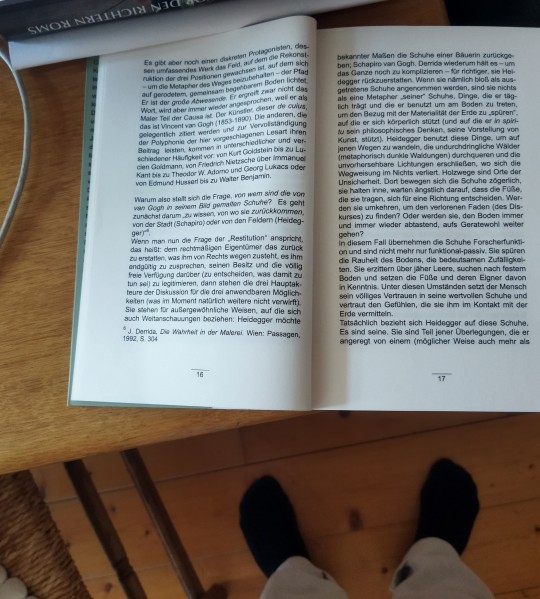
Von wem sind die Schuhe?
Vom wem die Strümpfe? Das sind so Fragen, die, weil sie sich in Schichten und an Schichten stellen, archäologisch und genealogisch angegangen werden sollten.
0 notes
Text
Un bel concerto di canto nel cortile di Palazzo d'Accursio
Ieri pomeriggio, chi avesse varcato il portone di palazzo d’Accursio, sede dal 1336 del governo della città di Bologna dal secolo XIV, lasciando il bailamme di piazza Maggiore, sarebbe entrato in un’oasi di pace creata dal piacevole concerto di brani lirici eseguiti congiuntamente dalla Corale Vincenzo Bellini di Budrio e dalla Corale Quadrivium di Medicina, diretti dalla maestra Paola Del Verme,…
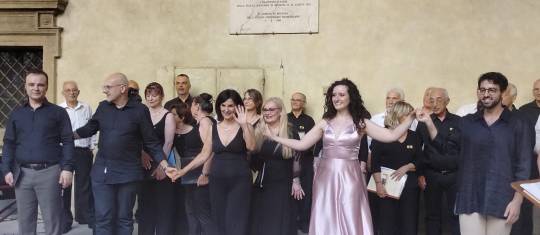
View On WordPress
#Alessandro Granda#Andrea Mongelli#Annalisa Monaco#Anselmo Colzani#arlo Colombara#Arrigo Boito#Aureliano Pertile#Bologna#Budrio#Carlo Colombara#Claudia Marchi#Corale Quadrivium#Corale Vincenzo Bellini#Dave Monaco#Ferruccio Mazzoli#Filippo Giovagnorio#Franco Bordoni#Franco Ghione#Fulvio Massa#Gaetano Donizetti#Giacomo Puccini#Gioachino Rossini#Giuseppe Manacchini#Giuseppe Verdi#I Lombardi alla Prima Crociata#Il Barbiere di Siviglia#L&039;Elisir d&039;amore#La forza del destino#La traviata#Lina Pagliughi
0 notes
Text







Meissen porcelain figurines by Johann Joachim Kaendler;
The Thrown Kiss, c. 1736
The hand kiss, c. 1738
Columbine and Pantaloon, 1738
Polish noblewoman, 1735-45
Columbine and Pantaloon, 1741
Faustina Bordoni and fox, c. 1743
Lady with pugs, 1744-50
#Johann Joachim Kaendler#figurine#sculpture#mdpsculpture#18th century#germany#18th c. germany#1730s#1740s#mid 18th century#porcelain#1738#1741
40 notes
·
View notes
Text

Guess who was invited to join a mariachi band!

The guitarrón makes my hands look petite!
Low to high:
ADGCEA
A perfect fifth lower than a guitar.
Also, the high A is down an octave. Or rather, it is at 16' pitch (octave below bass clef range) and the rest are at 8' (bass clef range).
It's fretless, the action and string tension are like double bass viol (huge), and the bass lines are played in parallel octaves!

"This bass is seaworthy."
The band leader lent it to me. I showed him my Italian chitarrone, aka theorbo, and pointed out the similarities:
ADGBEA
ADGB at 8', EA at 16'.
The placement of the major third in the tuning is different (guitar style vs. lute style), and the chitarrone has two reentrant strings instead of one, plus an octave of bordoni (harp contrabass strings).
Italians 🤜🤛 Latinos
I hope to serve this tradition well. I want to learn vihuela, guitarra, y guitarrón. And by "learn guitarra," I mean learn to really wail on it. These people hit on all six and strum to be heard.
I'll have to learn to sing harmony in Spanish while playing.
I'm so excited!
23 notes
·
View notes
Text
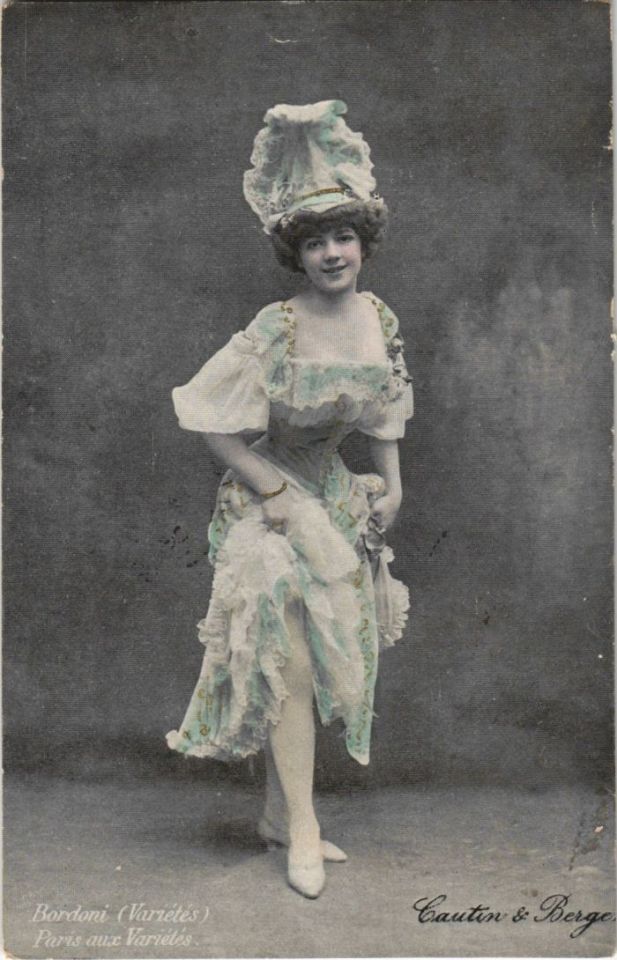
Parisian entertainer Bordoni
French vintage postcard, mailed in 1906 to Pontoise
#bordoni#historic#photo#briefkaart#vintage#pontoise#sepia#photography#carte postale#1906#postcard#mailed#parisian#postkarte#entertainer#postal#tarjeta#bordoni french#ansichtskarte#old#french#ephemera#postkaart
5 notes
·
View notes
Text


HELP Anna Radziejewska and Dorota Szczepańska made a "Rival Queens: Dinner For Two Voices" music film in which they star as Faustina Bordoni and Francesca Cuzzoni. It starts with eye sex across the table, and before you ask - yes, they do end up on the table.
#opera#rival queens#on the table biting a soprano: likely place for anna radziejewska to be.#i hauve mimetic contagion.
17 notes
·
View notes
Text
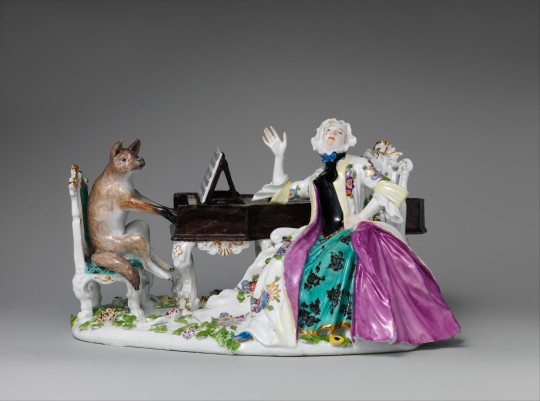
Johann Joachim Kändler (modeler), Faustina Bordoni and Fox, c. 1743
Meissen Manufactory Hard-paste porcelain 6 x 11 x 6 3/4 in. (15.2 x 27.9 x 17.1 cm)
7 notes
·
View notes
Text
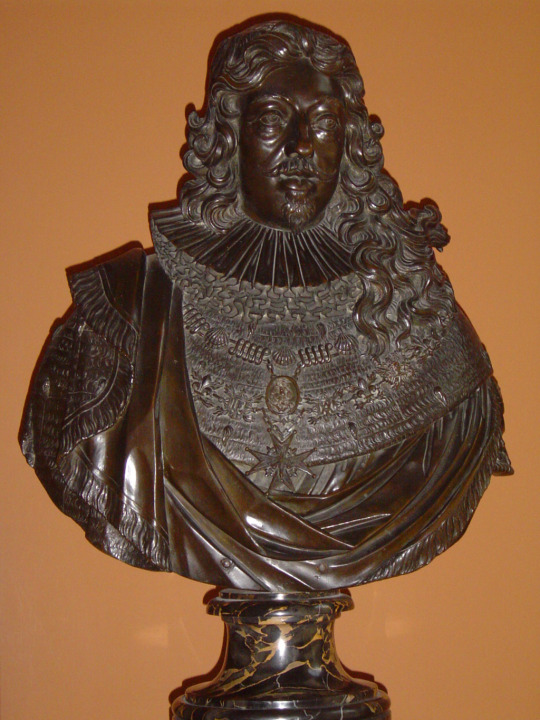
Louis XIII looking incredulous by Francesco Bordoni ❤
#louis xiii#giving me tim curry vibes this one#am i the only one?#its the eyes and expression for me
6 notes
·
View notes
Text


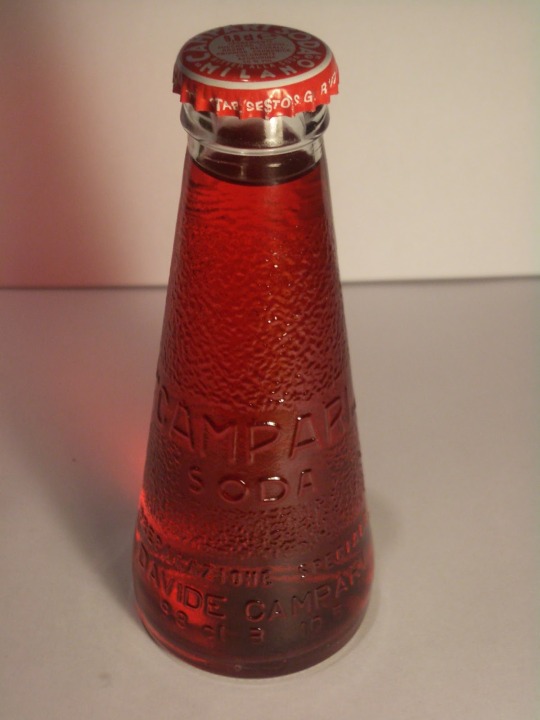
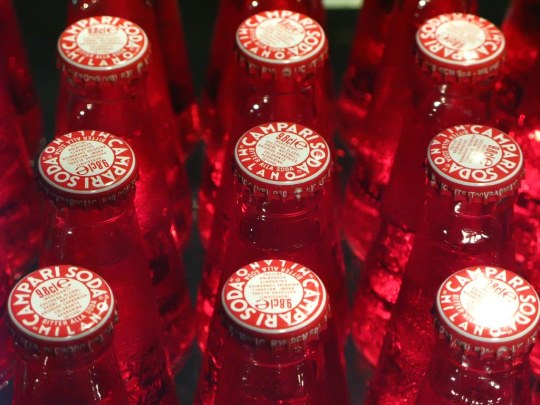

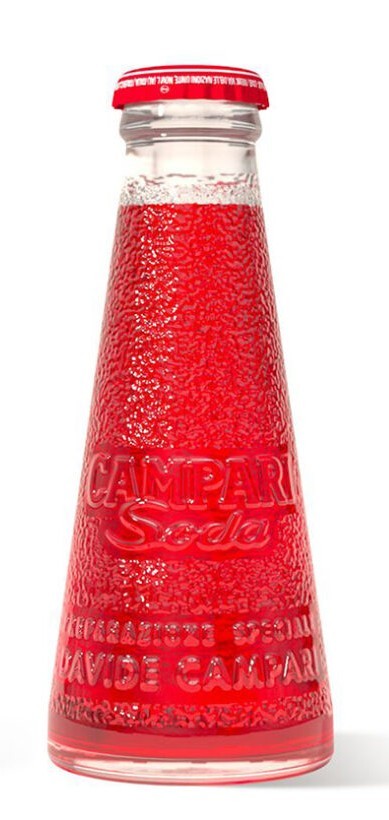
CATCHES ONE'S EYE INSTANTLY AND IS A DESIGN MASTERPIECE IN EVERY WHICH WAY -- THE CAMPARI SODA BOTTLE.
PIC(S) INFO: Spotlight on the eternal design icon that is the conical bottle in which Campari Soda is still sold today. The futurist design was created by painter, sculptor, and graphic artist Fortunato Depero (1892-1960).
A SMALL HISTORY: "After the Bitter Campari and Cordial Campari, respectively ruby red drink and liquor with macerated raspberries in cognac, the company of Milan’s Davide Campari launched on the market in 1932, exactly Campari Soda, or Bitter with the addition of soda. The drink was no longer being served with the siphon, but already mixed in the right doses in comfortable glass bottles in the shape of an inverted cup.
The bottle was ordered to Bordoni glassware in the early thirties and had to be made of frosted glass with two embossed lines at the base with the words “SPECIAL PREPARATION, Davide Campari & C. MILANO”, while in the center field was to appear as "CAMPARI SODA." All these features, combined with the special shade of red and the absence of the label, instead of the typical alcohol on the market, made of Campari Soda a product that broke conventions and, because of its shape and the advertising psychology, opened new sales strategies. Interesting to note that the registration of the name “Campari Soda” in 1932 served to secure the name of the product consists of the words “Campari” and “Soda”, but the three-dimensional mark could not be deposited (shape of the bottles, embossed character of the name) because of the lack of a legal definition.
The success of the new drink is due also to the fact that Campari expanded the scope of the product by installing supplying machines in public places, by inserting a coin, they released bottles. The distributor was completed by a figure conceived and always realized by Depero which reflects the inverted cone reason, the same as the bottle. The Trentino artist had long worked on this figure, elaborating several sketches from the early years of the association with Campari, which began in 1924. It can be assumed therefore that the company had to study the Campari Soda at the end of the twenties and that Depero had been responsible for providing the first plans for an advertising presentation, projects that were later used in the early thirties.
Davide Campari had the merit of being among the first Italian industrialist to notice how advertising could influence in a decisive way the visual perceptual faculties of the consumer. The partnership with Depero did not tie only to the design of the product, indeed. The Rovereto artist produced an enormous amount of sketches, ink, collage of colored papers, plastics for advertising projects, of which only a fraction was then realized. In 1931, demonstrating his commitment also in the publishing field, he published the Numero Unico Futurista Campari, a collection of graphic and poetic creations of advertising, combined with the launch of the Manifesto dell’Arte Pubblicitaria Futurista."
-- FERMO EDITORE (Italian blogspot), "Depero and the Campari Soda bottle: an history lasting 80 years," by Fossella Romito, c. October 2017
Sources: www.fermoeditore.it/en/blog-en/depero-and-the-campari-soda-bottle-an-history-lasting-80-years-2, Pinterest, L'Italo-Americano, Italy On This Day, Briasco Distribuzione, Biber Architects, various, etc...
#Campari Soda Bottle#Campari Apéritif#Fortunato Depero#Italian Futurism#Italian Art#Campari Soda#Futurism#Futurist Design#Italian#Italian Cocktails#Italian Futurist#Cocktails#Italian Drinks#Vintage Design#Italian Apéritif#Italian Design#Apéritif#Soda Bottle#Italy#Modernist Design#Futurist#Modern Design#Design Icon#Modern Art#Vintage Style#Campari#Retro Design
3 notes
·
View notes
Text
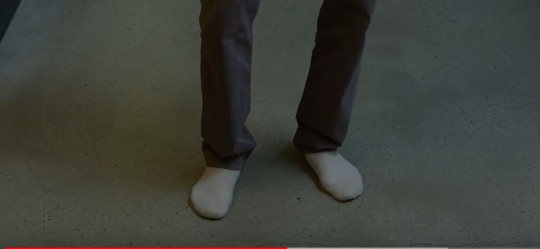
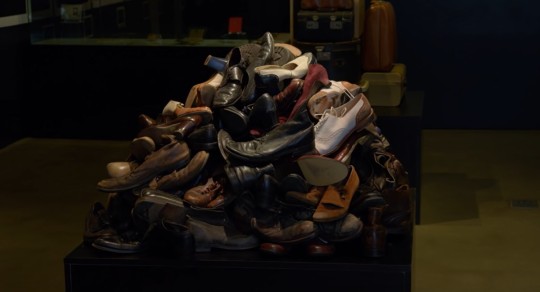



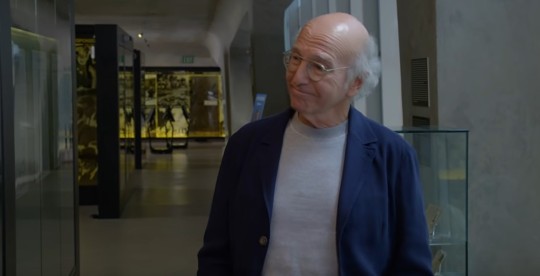



Komödie
Komödie ist dasjenige Drama, das von Leuten handelt. Sie handelt von denen, von denen immer etwas absteht, zum Beispiel Haare, Fäden, Ohren oder Schnürsenkel. In der Komödie sprechen die Leute abschweifend, dort spricht man keine Hochsprache, man spricht dort Dialekt, in Tönen, die für nichts ganz, nicht ganz gerade stehen. Man spricht dort Hessisch oder Kanack oder sagt wenigstens mal oi wey. Die Komödie steht den Leuten nicht, lässt sie lächerlich erscheinen. Sie steht den Leuten ab. In der Komödie tauchen Abstehende und eingebildete Kranke, also Abgestandene auf. Komische Leute: eine Tautologie, die einschließt, widersprüchlich zu sein.
In der Komödie sind alle Seiten falsch und am Ende ist alles zerstiebt, zersteubt (alles andere bestäubt oder verstaubt), alles zerstoben. Die talentiertesten Melancholiker fühlen sich in der Komödie am wohlsten. Da schunkelt es so. Hat einer immer noch keinen Witz, kann seine Melancholie so doll nicht sein. Die Kömödie zerstreut nichts, was nicht zerstreut wäre; sie expliziert Zerstreuung, die spätestens seit Blaise Pascal zu den Kültürtechniken der Souveränität gehört (auch oder weil die Leute, das Personal der Komödie, gerade nicht souverän sind).
Larry David ist Komödiant. Die oben abgebildete Passage ist eine Referenz. Sie ist eine Referenz zu etwas und an etwas. Sie ist Referenz an Martin Heideggers Text über den Ursprung des Kunstwerkes, an eine Replik von Meyer Shapiro, an Jacques Derridas Text Restitutionen/ von der Wahrheit nach Maß und an Carlo Bordonis Heidegger und ein Paar Schuhe. Spätestens jetzt ist diese Passage eine Referenz, die an diesen Texten hängt, weil sie mit diesen Texten assoziiert ist. Die Passage formuliert die Frage nach dem Eignen, nach dem Eigenen, nach dem Eigentum und nach dem Eigentümlichen als Frage danach, wem (die) Schuhe gehören. Larry David ist ein Mime, er stellt in dieser Passage Larry David nach.
Klingt alles erfunden, ist es auch, ändert aber kein Fitzelchen an dem, was daran wahr und real ist. David braucht Schuhe und findet welche in einem Haufen. Diese Schuhe werden nicht mehr als das gebraucht, als das die hergestellt wurden. Ihren eigentliche Sinn und ihre eigentliche Funktion wird in dem haufen nicht wahrgenommen. In dem Haufen erinnern sie an den Holocaust oder die Shoa, dafür sind Schuhe eigentlich nicht gemacht. Also nimmt David ein Paar aus dem Haufen. Ohne Aneignung eignet sich wenig, nicht die Komödie, nicht, wenn sie anfangen will, dann muss auch die Eignung anfangen.
3 notes
·
View notes
